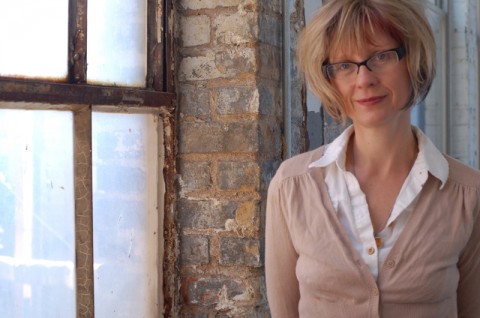Bonus interview with Kira Obolensky
We published a longer interview with Core Writer Kira Obolensky earlier this season, before the Ruth Easton New Play Series workshop of her “low-fi musical” The Overcoat. Learn more about Kira in this bonus interview:
You’ve said that when you write you imagine an audience comprised of everyone. How does that affect your process?
Writing a play involves imagining different voices and then putting those voices together in situations to tell some kind of story. It’s like a combination of playing with dolls and mental illness.
My work with Ten Thousand Things Theater provokes me to imagine not just what’s happening on the stage, but also who may be watching. For me, it makes the process clearer. For one, I become acutely aware of any self indulgence or navel gazing, and instead have to always think about how on earth is this thing I’m working on going to connect and entertain and enrapture the people who will be ultimately watching it. I have to answer the “why” question—why this story, why now?—with more than, well, it’s something I’m interested in…
Imagining this audience of everyone also made my work funnier, bolder and riskier—essentially, I will do anything on the page to keep an audience’s attention.
How is writing an adaptation (like your play The Overcoat) different from writing a play based on your own story?
Adaptation is either about expansion (a short story) or compression (a novel). The challenge is to remain truthful to the experience of the original form, while making it something uniquely your own. Adaptation always has a bit of “riffing” to it so that it can live as something other than an illustration or an echo.
What is the most unusual place you’ve found inspiration for a play?
In a hatmaking museum in Danbury Connecticut. Or a car wash.
What does your writing space look like?
I’ve got an office in my house; if I really need to get work done, I drive to Wisconsin, where my family has a small farm. There’s no internet there and this amazingly makes me way more focused.
When you sit down to write a play, how do you start?
The blank page feels to me like a portal I fall into. I get great comfort from writing down the first page of a play: character list, the place, the time. When those things are summoned I wait to feel a kind of pull of the material—the material saying, hey, come on, get to it—make us come alive. Sometimes that happens as easily as pulling a thread; other times, it’s like chipping away at an iceberg with a spoon. I love the first draft process, even as I recognize that most of us write “shitty first drafts” (Anne Lamott coined this phrase.) I understand something about writing that I try to impart to my students—the words are our clay. If you don’t get them on a page you really have nothing to work with.
When did you know you wanted to be a playwright?
I didn’t know you could actually be a playwright until I found the Playwrights’ Center. I was in my late 20s. I took classes here. I wrote a play. That’s when I knew I wanted to be a playwright—the form was so cool, so expansive and yet logical, like a puzzle you solve with your imagination.
What’s something about you that might surprise people?
I teach playwriting to incarcerated women.
What is the best piece of advice you’ve been given?
Don’t worry about what’s “possible” on stage.
What is a risk you’re proud of taking?
It’s a risk to be any kind of artist in this society. I’m proud—and glad—I took that risk. I could have been a lawyer. I mean I do have an English degree.
Ed. note: Kira added one last question:
What is the name of your son’s band?


 Facebook
Facebook Twitter
Twitter